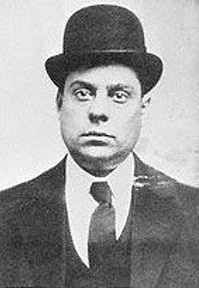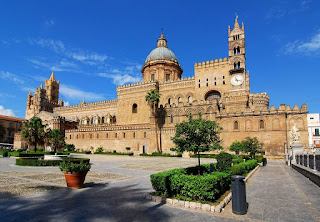Cellist who became orchestra leader by chance
The brilliant conductor Arturo Toscanini was born on this day in 1867 in Oltretorrente, a working-class neighbourhood of Parma, now part of Emilia-Romagna.Arturo Toscanini is remembered as one of the
most influential figures in 20th century music
Toscanini came to be recognised as one of the most influential musicians of the late 19th and early 20th century. An intense individual who was a perfectionist in everything he did, as well as having a brilliant ear for detail in orchestral performances, he also had the gift of being able to remember complete musical scores after only one reading.
At various times, he was the music director at Teatro alla Scala in Milan and at the New York Philharmonic. He became particularly well known in the United States after he was appointed the first music director of the NBC Symphony Orchestra.
Toscanini had the privilege of conducting the world premieres of many of the greatest operas of his lifetime, including Pagliacci, La bohème, La fanciulla del West and Turandot, as well as Siegfried, Götterdämmerung, Salome, Pelléas et Mélisande and Euryanthe.
The son of a tailor, Toscanini developed an interest in music at an early age and won a scholarship to Parma Conservatory, where he studied the cello.
 |
| Toscanini (right) and the composer Giacomo Puccini enjoyed a close professional relationship |
Prior to a presentation of Verdi’s Aida, the singers refused to work with the locally hired conductor, Leopoldo Miguez, who abruptly resigned. His replacement was subjected to booing from the audience, who were unhappy with his performance, and also resigned, leaving the orchestra without a conductor and the next performance only hours away.
Aware of his ability to remember whole scores, a member of the orchestra suggested giving the baton to Toscanini. Only 19 years old and with no conducting experience, Toscanini was reluctant at first but was eventually persuaded to accept the invitation, aware that the whole tour was at risk of being cancelled if he did not.
In the event, he led the two-and-a-half hour performance flawlessly, and entirely from memory. He found he had a natural talent for the job. The audience warmed to his charisma and intensity and applauded his musicianship. He kept the baton for another 18 operas as the tour unfolded with great success.
 |
| Toscanini became one of the most sought-after conductors |
He made his conducting debut in Italy at the Teatro Carignano in Turin in November, 1886, leading the premiere of a revised version of Alfredo Catalani’s Edmea. He soon broadened his repertoire to symphonic concerts, his reputation growing so fast that in 1898 he was named principal conductor at La Scala, at the age of just 31.
He remained at the Milan theatre, Italy’s principal opera house, for 10 years before he was lured away to America for the first time by Giulio Gatti-Casazza, the former general manager at La Scala, who had taken the same role at the Metropolitan Opera in New York and persuaded Toscanini to join him there.
Toscanini spent seven seasons at the Met, returning to Europe in 1915. He was due to leave New York on the British liner RMS Lusitania on May 7 but decided at the last moment to depart a week earlier on the Italian liner Duca degli Abruzzi. It proved a mightily fortuitous decision: the Lusitania never made it to its intended destination, sinking off the coast of Ireland after being torpedoed by a German u-boat. A total of 1,197 passengers and crew perished.
He maintained his transatlantic lifestyle, conducting around Europe and in the United States, leading the New York Philharmonic-Symphony Orchestra between 1928 and 1936. He ceased working in his native Italy, however, after falling foul of the Fascist leader, Benito Mussolini.
Mussolini was keen to attach himself to Toscanini, whom he described as ‘the greatest conductor in the world’ and wished to promote as a symbol of Italian excellence. But Toscanini had little truck with Fascism, defying Mussolini by refusing to conduct the party’s official hymn, Giovinezza.
 |
| Toscanini's tomb at the Cimitero Monumentale in Milan, where he was buried after his death at 89 |
Prior to that, he had considered retirement. Instead, he embarked on a new chapter of his career, leading the newly-formed NBC Symphony Orchestra. When Toscanini did finally retire, in 1954, he was 87 years old.
Although he reportedly had numerous affairs, notably with the American soprano, Geraldine Farrar, Toscanini was married only once, to Carla De Martini, who was a teenager when they met. They remained together from their wedding in 1897 to her death in 1951. They had three children, a son, Walter, and daughters Wally and Wanda.
Toscanini died on January 16, 1957, having suffered a stroke on New Year's Day at his home in the Riverdale section of the Bronx in New York City. He was 89. His body was returned to Italy and buried at the Cimitero Monumentale in Milan. His tomb carries an epitaph based on a remark he is said to have made at the end of the 1926 premiere of Puccini's unfinished Turandot.
"Qui finisce l'opera, perché a questo punto il maestro è morto - Here the opera ends, because at this point the maestro died".
Travel tip:
The house where Toscanini was
born is now a museum of his life
The house in Borgo Rodolfo Tanzi, in the Oltretorrente district of Parma, where Arturo Toscanini was born, is now a museum of his life, open to the public between 10am and 6pm from Wednesday to Sunday, closing on Monday and Tuesday. A 15-minute walk from the city centre and close to the sprawling green space of the Parco Ducale, the house was one shared by the Toscaninis and three other families. His father, a tailor who fought in Garibaldi’s army in the campaign to unite Italy, used the downstairs room as a workshop. Among the exhibits on display are photographs, theatre programmes and posters, letters to and from composers with whom he worked, such as Giacomo Puccini and Richard Strauss, and some of the clothes he wore to conduct. There is a letter from Albert Einstein, the German physicist and noted campaigner against racism, praising Toscanini for standing up to the Fascists.
Travel tip:
Parma's 12th century baptistery
is among the city's main sights
Parma is an historic city, famous for its Prosciutto di Parma ham and Parmigiano Reggiano cheese, the true ‘parmesan’. In 1545 the city was given as a duchy to the illegitimate son of Pope Paul III, Alessandro Farnese, whose descendants ruled Parma till 1731. As well as Toscanini, the city’s musical heritage includes the composer, Giuseppe Verdi, who was born near Parma at Bussetto. The city has a prestigious opera house, the Teatro Regio, and a Conservatory named in honour of Arrigo Boito, who wrote the libretti for many of Verdi’s operas. An elegant city with an air of prosperity common to much of Emilia-Romagna, Parma’s outstanding architecture includes an 11th century Romanesque cathedral and the octagonal 12th century baptistery that adjoins it, the church of San Giovanni Evangelista, which has a beautiful late Mannerist facade and bell tower, and the Palazzo della Pilotta, which houses the Academy of Fine Arts, the Palatine Library, the National Gallery and an archaeological museum.
Also on this day:
1347: The birth of Saint Catherine of Siena









.jpg)





















